Introduction to Meriden Mall
The Evolution of a Shopping Hub
Meriden Mall, once known as Meriden Square and later Westfield Meriden, is a testament to the ever-evolving world of retail and community spaces.
Nestled in Meriden, Connecticut, this mall, sprawling nearly 900,000 square feet, was not only Connecticut’s seventh-largest mall but also a significant landmark in the region.
With over 140 shops in its heyday, it offered various shopping experiences. Now it has only about 50 tenants, featuring traditional retailers like Boscov’s, Dick’s Sporting Goods, and TJ Maxx.
Specialty stores such as Charlotte Russe, Bath and Body Works, and Torrid add to the mall’s diverse retail mix, making it a one-stop destination for various shopping needs.
A Journey Through Time
Since its inception in 1971, Meriden Mall has seen multiple phases of growth and transformation. As times changed, so did Meriden Mall.
It embraced the challenge, continually adapting to stay relevant and appealing. The 1990s brought significant renovations, adding new dimensions to the mall’s structure and offerings.
A new wing anchored by Sears and a modern food court in 1993 marked a significant expansion. This era also saw the merger of G. Fox with Filene’s, which reflected the changing dynamics in the retail sector.
The turn of the century brought further developments, with Lord & Taylor becoming a new anchor in 1999, only to be replaced by Dick’s Sporting Goods in 2005.
In an era where many malls struggle to retain their past glory, Meriden Mall is a testament to change and adaptation.
Though it may not be in its heyday, the mall still plays a crucial role in the community of Meriden, Connecticut.
By adjusting to the evolving retail and consumer trends, it offers a blend of shopping, dining, and leisure activities, maintaining its place as a noteworthy destination.
The Origins and Early Years of Meriden Mall
A Glimpse into the Past: The Mall’s Inception
The story of Meriden Mall begins in the early 1970s, a time marked by the rise of suburban shopping centers across America.
Opening its doors in 1971, the mall was originally a project of The May Department Stores Company. Its design reflected the era’s architectural trends, featuring a two-level, dumbbell-shaped shopping center.
The mall initially anchored two significant stores: G. Fox, a Connecticut-based department store owned by The May Company, and JCPenney, a national retailer known for its wide range of merchandise.
These anchor stores were instrumental in establishing Meriden Mall as a regional shopping destination.
A Diverse Mix of Original Tenants
The mall’s original tenant mix was a vibrant assortment of retailers and services. It included popular names like Radio Shack and Spencer Gifts, alongside specialty stores such as Hickory Farms, Barricini Candy, and Record World.
Waldenbooks offered a haven for book lovers, while CVS catered to health and wellness needs.
The inclusion of unique stores like a Singer sewing machine shop, a travel agency, a piano and organ store, a liquor store, and a tobacco shop contributed significantly to the varied retail array of the mall.
A unique aspect of the mall was its food offerings. Friendly’s Ice Cream parlor and restaurant provided a cozy dining spot within the main mall area, while both JCPenney and G. Fox housed their restaurants, offering shoppers a place to relax and dine.

Architectural Features and Community Impact
Meriden Mall was not just about shopping but also the experience. One of the mall’s notable architectural features was an incline ramp-escalator located in the center court, a novel concept at the time.
This feature and the mall’s overall design created a welcoming and engaging shopping environment.
The mall quickly became more than a shopping center; it became a community hub where people from Meriden and surrounding areas gathered for more than just retail therapy.
It was a place for social interactions, where friendships were made, and families spent time together, making the mall an integral part of the community’s social fabric.
Expansions and Renovations: Adapting to Retail Trends
The 1993 Expansion: A New Era Begins
In 1993, Meriden Mall embarked on a significant journey of transformation. This year marked a pivotal expansion with the addition of a two-level wing anchored by a brand-new Sears department store.
This expansion wasn’t just about adding more retail space; it represented a strategic move to adapt to the evolving retail landscape.
Including a modern food court as part of this expansion further diversified the mall’s offerings. This development transformed the mall’s layout into a T-shaped floor plan, enhancing the shopping experience and providing more variety for visitors.
This expansion was a clear sign of the mall’s commitment to staying relevant and competitive in the fast-paced world of retail.
The 1997 Overhaul: A Bold Step Forward
Just four years later, in 1997, the Meriden Mall took another bold step in its evolution. Announcing an ambitious renovation, the mall added an impressive 147,000 square feet of extra floor area and 30 stores.
This expansion created a cross-shaped floor plan, further enhancing the mall’s physical presence and retail capacity. The new anchor, built opposite Sears, was the upscale department store, Lord & Taylor.
This addition, part of a $38 million revitalization and expansion plan, signified the mall’s exclusive shift and desire to offer a more diverse and sophisticated shopping experience.
Alongside the new anchor, a multistory parking garage was built beside Sears, increasing convenience for shoppers.
This renovation, completed in 1999, was a physical expansion and a reimagining of the mall’s place in the retail world.
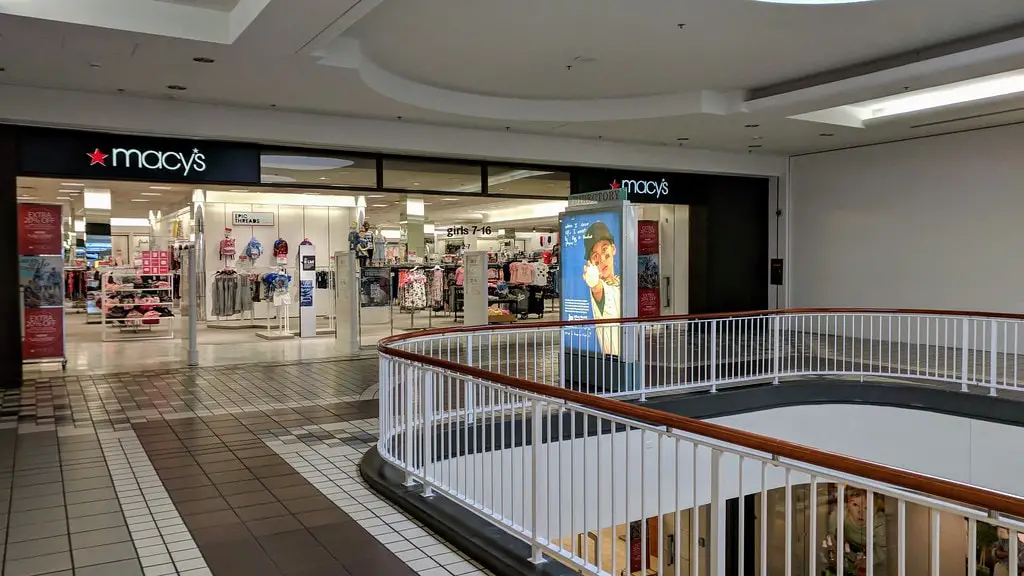
Navigating Changes and Challenges
Change is a constant in the retail industry, and Meriden Mall has navigated its fair share. In 2005, Lord & Taylor closed its doors at the mall, a decision reflective of the broader repositioning of the brand. However, Meriden Mall quickly adapted to this change.
Dick’s Sporting Goods moved into the original Lord & Taylor space, bringing a new type of retailer to the mall and diversifying its offerings.
The mall’s ability to swiftly replace departing stores with new tenants has been a key factor in its resilience.
Another significant change occurred when Filene’s, which had replaced G. Fox in the 1990s, transitioned into Macy’s in 2006, further illustrating the mall’s ongoing evolution in line with the shifting tides of retail trends.
The 21st Century: Challenges and Departures
2010s Changes: Adapting to a New Retail Era
In 2014, another major shift occurred when JCPenney, one of the mall’s original anchor stores, was replaced by Boscov’s.
This was a notable event, as it marked Boscov’s first foray into Connecticut and the entire New England region.
The arrival of Boscov’s, a family-owned department store, added a new dimension to the mall’s retail mix, offering a different shopping experience to its patrons.
Recent Departures: A Reflection of Broader Trends
The departure of major stores like Sears, Macy’s, and Best Buy from Meriden Mall in recent years reflects broader trends affecting malls across America.
These closures are symptomatic of the challenges faced by traditional brick-and-mortar retail in the digital age.
For instance, Sears, a once-dominant retailer, announced in 2018 that it would close its Meriden Mall location as part of a broader strategy to reduce its physical presence.
Similarly, Macy’s departure in 2020 was part of a strategic decision to focus on higher-performing locations, underscoring the changing dynamics in consumer shopping habits and preferences.
These departures represented significant shifts for Meriden Mall, requiring adaptation and rethinking its tenant mix and overall strategy.
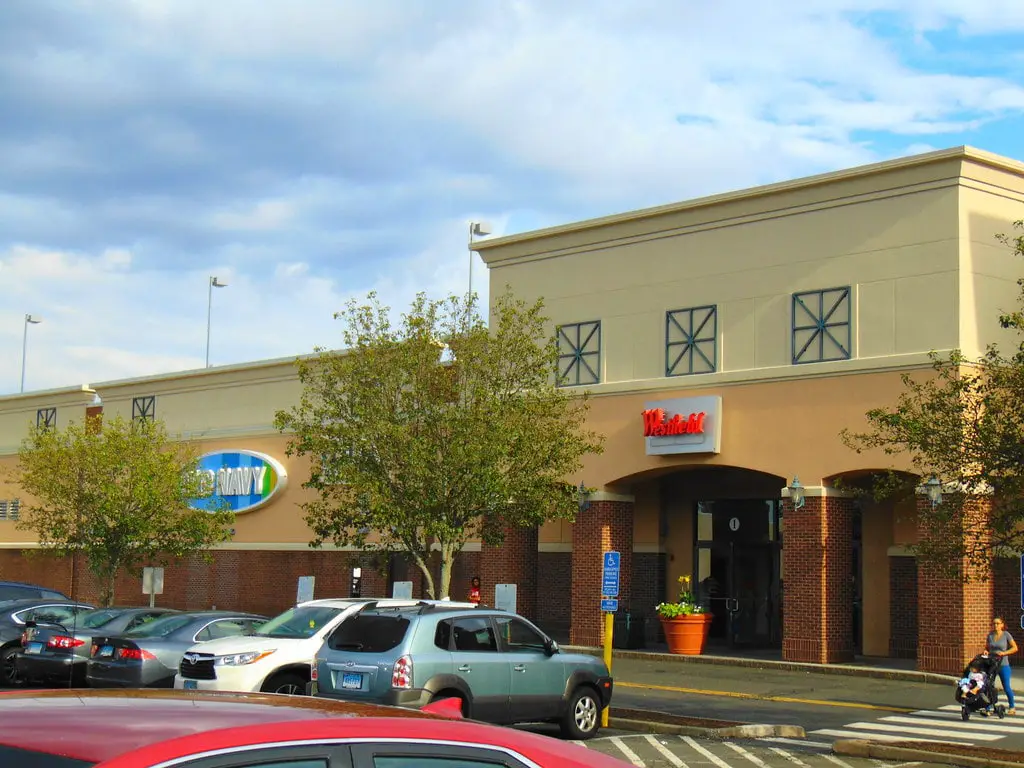
The Impact of COVID-19: Accelerating Change
The onset of the COVID-19 pandemic in 2020 brought unprecedented challenges to the retail industry, and Meriden Mall was no exception.
The pandemic accelerated the decline of some traditional department stores and altered shopping behaviors, leading to an increased focus on digital and online retail.
In response to these changing market conditions and the impact of the pandemic, the mall had to navigate through these turbulent times.
The closure of Best Buy in 2021 due to the pandemic’s influence was a notable example of how external factors continued to shape the mall’s retail landscape.
Despite these challenges, Meriden Mall’s ability to endure and adapt highlights its resilience in a rapidly changing retail environment.
A Shift in Strategy: From Retail to Recreation
Embracing a New Direction
In recent years, Meriden Mall has witnessed a transformative shift, pivoting from its traditional retail focus to embrace more experiential and recreational offerings.
This change is a strategic response to the evolving retail landscape, where the experience is becoming as important as the product.
The mall has started hosting unique attractions, such as indoor pickleball courts in the former Old Navy/Meriden Public Library space and a pop-up slingshot range on its lower level.
These additions are not just about filling vacant storefronts; they represent a deliberate move to attract a broader range of visitors and create a more dynamic and engaging environment.
A Hub for New and Unique Tenants
One of the standout examples of this new direction is the addition of Imperial Gaming & Collectibles.
Moved from downtown Southington to the mall in May, this card game shop and gaming center has become a destination for enthusiasts, hosting trading card game tournaments that attract a large player base.
This kind of tenant adds a vibrant and youthful energy to the mall, catering to a demographic ranging from teens to young adults.
The presence of Imperial Gaming, alongside other recreational attractions, signifies a shift in the mall’s target audience and its efforts to offer a diverse range of activities beyond traditional shopping.
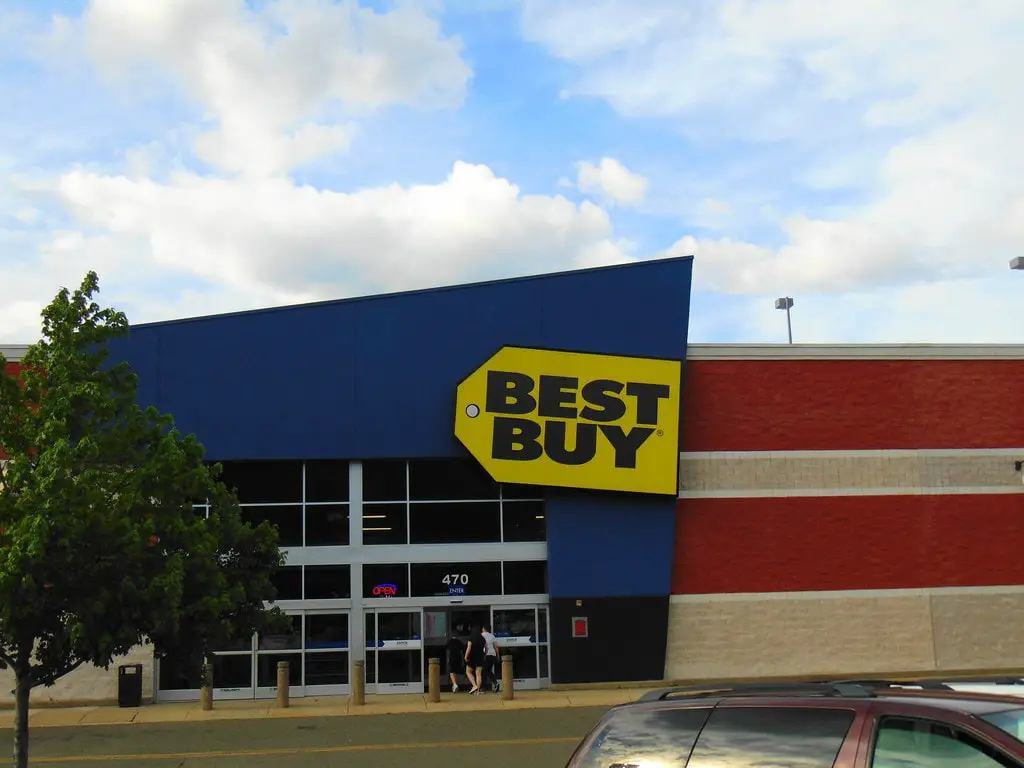
Responding to Community Needs and Trends
The move towards recreational and experiential offerings also responds to broader community needs and trends.
In an era where digital retail is on the rise, physical malls like Meriden are finding new ways to stay relevant and appealing.
By integrating entertainment and leisure activities, the mall is not only looking to increase foot traffic but also aiming to become a community hub where people come to socialize, relax, and enjoy a variety of experiences.
This strategic shift reflects an understanding that the future of malls lies not just in selling products but in creating memorable experiences and fostering community connections.
Current Anchors and Their Stories
Boscov’s: A New Chapter for the Mall
In November 2015, Meriden Mall welcomed a significant new tenant: Boscov’s. This event marked the entry of the family-owned department store chain into the Connecticut market and its first presence in the entire New England region.
Boscov’s arrival was more than just adding a new store; it represented a fresh chapter in the mall’s history.
The store’s opening followed the departure of JCPenney, one of the mall’s original anchors, and involved a complete remodeling and expansion of the existing structure.
Boscov’s brought new retail energy and diverse products ranging from clothing to home goods, catering to a wide audience and reinforcing the mall’s status as a key shopping destination.
Dick’s Sporting Goods: Filling the Void
Dick’s Sporting Goods, another major anchor at Meriden Mall, stepped in to fill the space left by the upscale department store Lord & Taylor in 2005.
This significant transition shifted the mall’s retail focus from high-end fashion to sports and lifestyle merchandise.
Dick’s Sporting Goods offered a different kind of shopping experience, focusing on sporting goods, outdoor gear, and athletic apparel.
Its presence catered to the locals’ growing interest in sports and outdoor activities, thus diversifying the mall’s appeal and drawing in a different segment of shoppers.
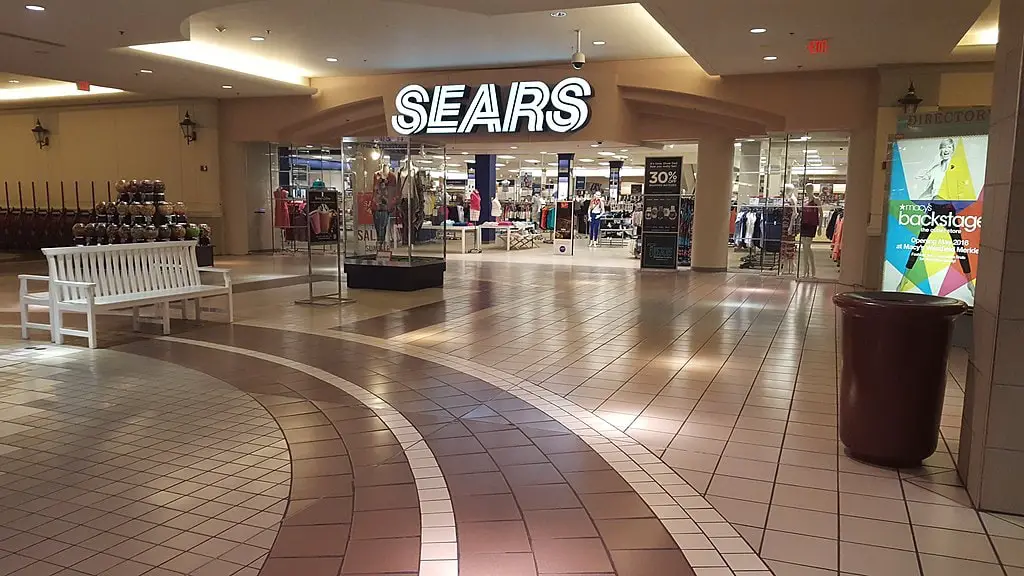
Remaining Anchors: Adapting and Thriving
Besides Boscov’s and Dick’s Sporting Goods, Meriden Mall continues to be home to a variety of other junior anchor stores.
Each of these anchors, including TJ Maxx and others, plays a crucial role in the mall’s ecosystem, offering a mix of products and services that cater to the needs and preferences of a diverse customer base.
These stores have adapted, constantly updating their offerings to stay relevant in the rapidly evolving retail landscape.
Future Prospects and Challenges
Upcoming Developments: Evolving with the Times
As Meriden Mall moves forward, several developments on the horizon signal its ongoing evolution.
Notably, Yale New Haven Health’s plan to transform the former Macy’s into a comprehensive retail health center is a significant shift from traditional retail use.
This project, though delayed, reflects a trend in repurposing mall spaces for non-retail uses, catering to community needs in new and innovative ways.
The prospect of new tenants in early discussions further indicates the mall’s commitment to rejuvenating and diversifying its offerings.
Navigating the Competitive Landscape
Meriden Mall’s journey has its challenges. The rise of nearby shopping centers, such as TownLine Square, presents a competitive landscape that the mall must navigate.
With their strip plaza formats and big box retailers, these centers have become attractive alternatives for national chains, drawing away some of the traditional mall clientele.
In response, Meriden Mall must continue to innovate and offer unique experiences and services that distinguish it from these competitors.
This competitive environment pushes the mall to constantly rethink its strategy and offerings, ensuring it remains an appealing destination for shoppers and visitors alike.
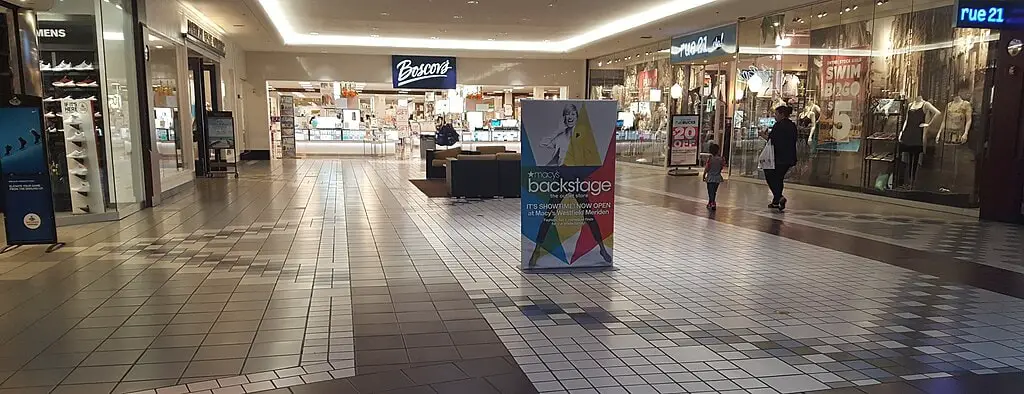
Strategic Decisions in a Changing World
The future of Meriden Mall hinges on strategic decisions that respond to shifting consumer preferences and retail trends.
The mall’s management must continue to balance the traditional retail model with the growing demand for experiential and leisure-based offerings.
Embracing trends such as sustainable practices, digital integration, and community-centric events could be key to attracting a new generation of consumers.
As the retail world evolves, particularly in the aftermath of the COVID-19 pandemic, Meriden Mall’s ability to adapt and innovate will be crucial in determining its place in the community and the retail industry.
Conclusion
Reflecting on Meriden Mall’s Journey
The story of Meriden Mall is one of adaptation and resilience in the ever-changing world of retail and community spaces.
From its inception in 1971 as a traditional shopping center to its current status as a mixed-use space blending retail with recreation, the mall has continuously evolved to meet its visitors’ shifting needs and desires.
Its journey through expansions, renovations, and strategic shifts reflects a deeper narrative about the changing nature of shopping centers in America.
Looking to the Future
As Meriden Mall looks to the future, its success will depend on its ability to stay dynamic and responsive to the changing retail environment.
The planned developments, the evolving tenant mix, and the strategic focus on experiential offerings are steps in the right direction.
The mall’s journey is a testament to the fact that with innovation, adaptability, and a focus on community needs, traditional shopping centers can continue to thrive and play a vital role in the fabric of urban and suburban life.
